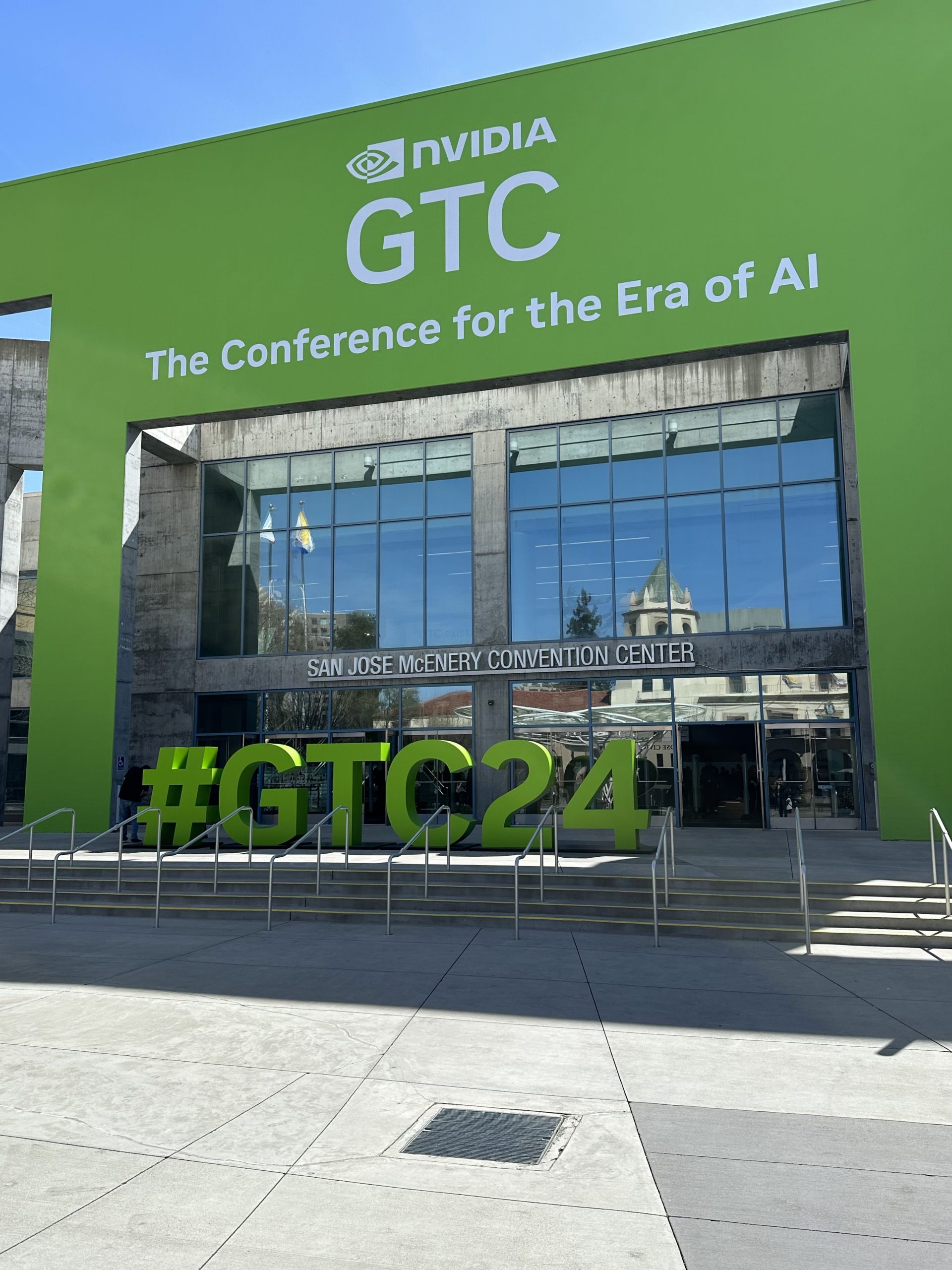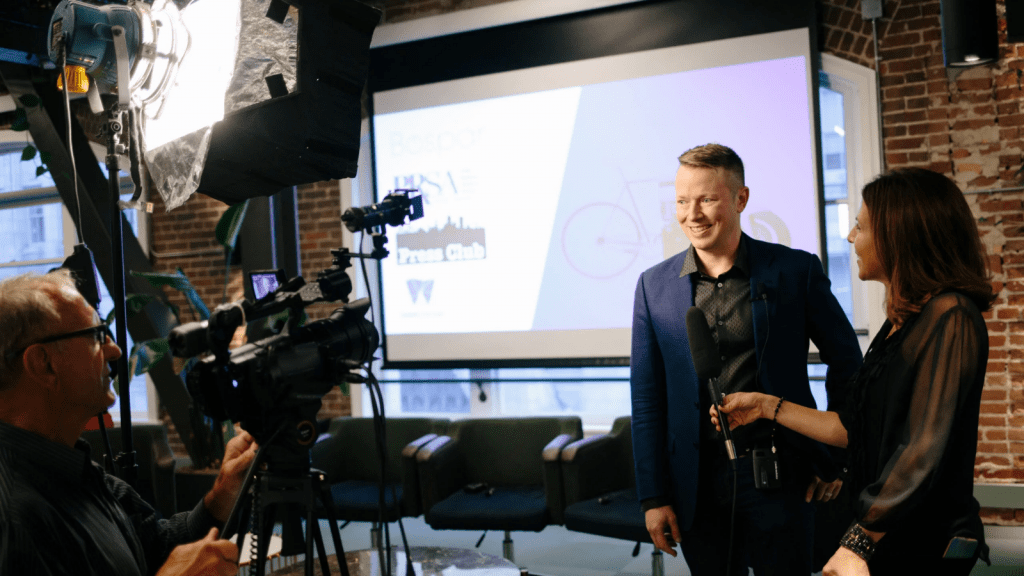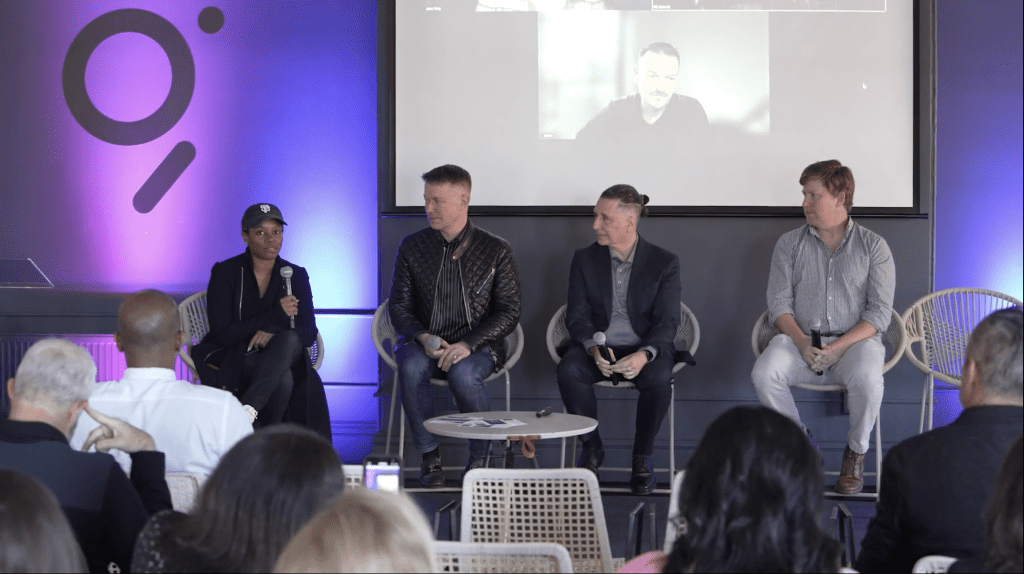Being born and raised in Chicago, I’ve had the great privilege of experiencing a world class city first-hand. Often overlooked by its coastal counterparts, there have been few moments of monoculture that have derived from the city by the lake – the ‘85 Bears, Michael Jordan and the 90’s Bulls, and Lollapalooza.
A first-of-its-kind music fest, Lollapalooza started as a touring act in 1991 before being revamped and reimagined many times and finally making Chicago its permanent home in 2005. Being right in my own backyard, I’ve had the opportunity to attend dozens of shows at the 400,000-person event, but none have ever come close to standing out quite like Daft Punk’s 2007 set.
You can say you were there
In what has since become something of legend (at least locally among the people in my demographic), Daft Punk’s performance at Lollapalooza stands out for a number of reasons. First, the eclectic and enigmatic French duo, known most famously for dressing up like robots, has always valued their privacy and hated touring. The Alive 2007 tour was one of just four tours Daft Punk ever did, and Lollapalooza marked one of just seven U.S. dates from that tour. The tour came on the heels of the band’s critically acclaimed album “Human After All” and redefined the live music experience for electronic acts with its patented pyramid stage design, cutting-edge visual effects and famous robot rave music.
The performance was incredible and in a way a bit indescribable. The closest you can get to chasing the feeling is listening to Daft Punk’s live album Alive 2007 – recorded at the band’s Paris show from the same tour.
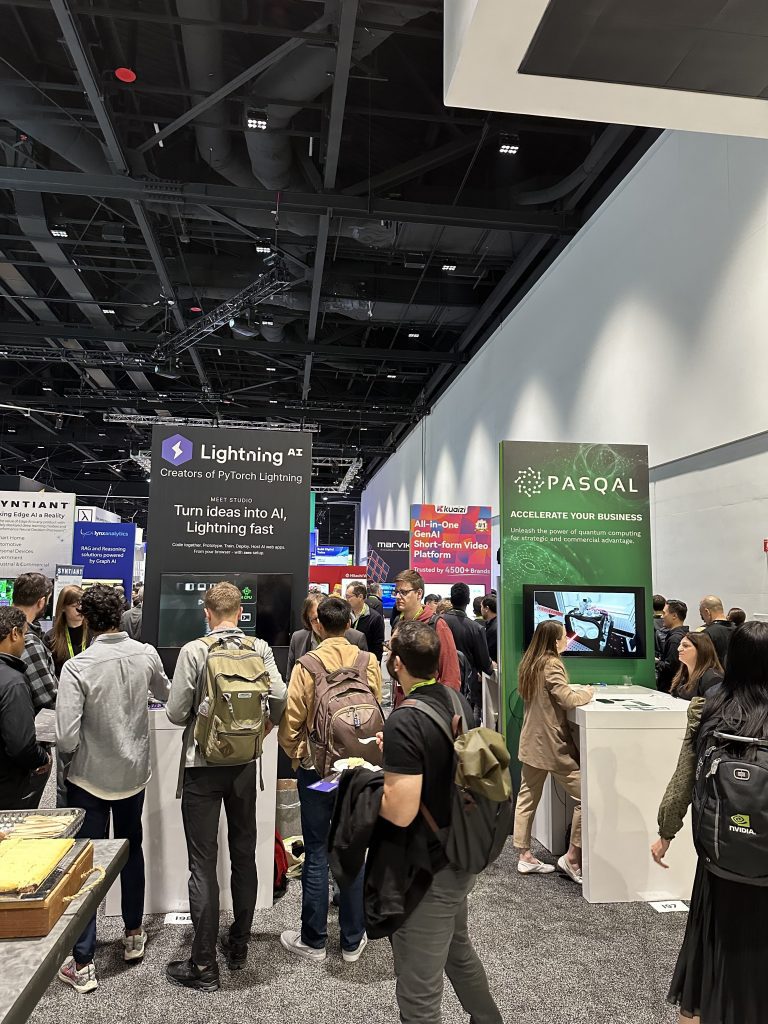
At some point though, now coming up on 20 years later, being at that show has almost become as cool as the show itself.
Daft Punk didn’t release another album until 2013. And after 28 years together the band announced its split in 2021 in a way that only it can. The band never toured again.
It was a moment, and you had to be there.
Attending NVIDIA’s GTC
What could that possibly have to do with attending the recent NVIDIA GTC 2024 tech conference? Aside from both having talented robots, there were a few other similarities.
Tech’s Rock Star Moment
There was, of course, the keynote by tech rock star Jensen Huang – a two-plus-hour speech to a filled SAP Center, a venue typically reserved for sporting events or concerts. Complete with stunning visuals, light shows and big reveals – more than 17,000 filled the room with an estimated 300,000 watching online. The NVIDIA CEO brought out billion-dollar chips never before imagined, new software written entirely by computers, and a whole host of robots. If Steve Jobs invented the rock tech event, Jensen has perfected it.
The Room Where It Happens
Taking over the San Jose convention center there was a buzz in the room all week long. The energy throughout the four-day show was palpable, with much of the show floor elbow-to-elbow with exhibitors and attendees. The conference serves as a melting pot of ideas, where industry leaders, developers, researchers and enthusiasts converge to push the boundaries of what’s possible with GPU-accelerated computing and AI. While official attendance numbers were not released, the show felt massive and teeming with excitement.
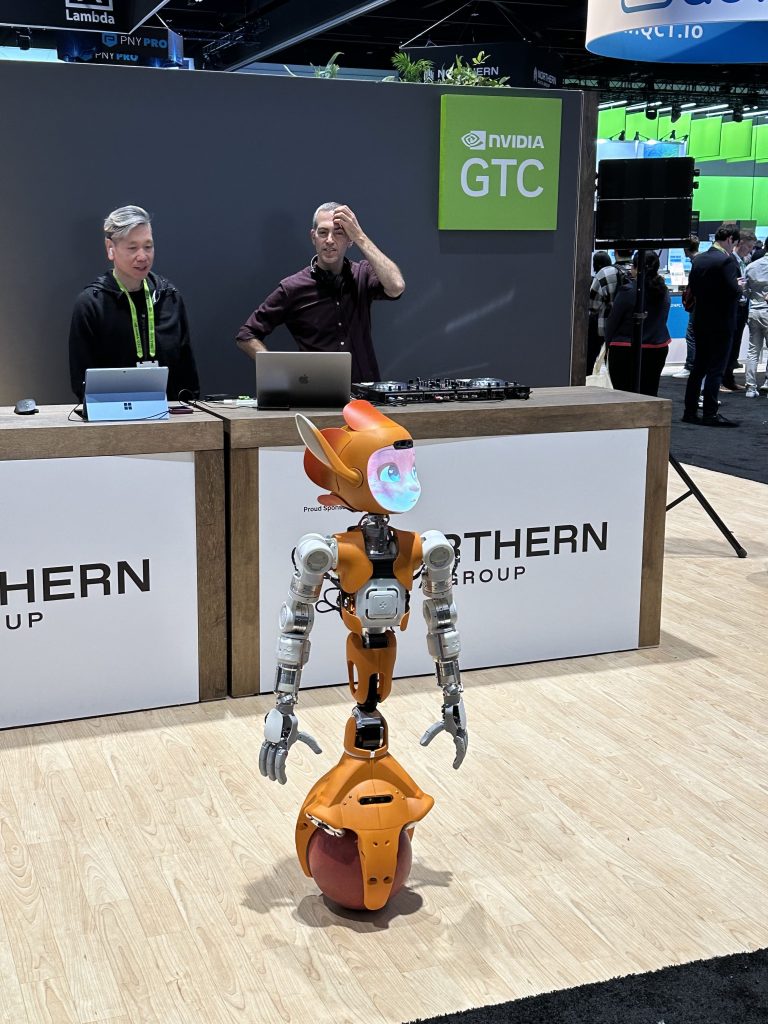
Just as Aaron Burr yearned to be “in the room where it happens,” individuals who participate in GTC are positioned to play a pivotal role in shaping the course of history. By attending GTC, participants gain access to invaluable insights, practical knowledge and networking opportunities that can catalyze their own projects and initiatives. Attending with my colleague Caroline Kamerschen, we had the opportunity to represent opposite ends of the tech spectrum.
For Caroline, she worked closely with our client, a publicly-traded leader in hybrid cloud and data storage infrastructure among enterprises, seizing the opportunity of GTC to unveil a groundbreaking partnership with NVIDIA. This announcement was particularly timely in light of Jensen’s keynote, which underscored NVIDIA’s future as an industrial and enterprise leader and unveiled more partners than I could name in a single blog post.
However, they weren’t alone: four other hybrid storage providers also used the event to showcase a partnership with NVIDIA. Knowing that a competitive differentiator was vital to getting the much sought-after attention of the media attending the event, weeks of prep went into building PR briefing books, highlighting top attending media, and getting executives prepared for media interviews and spontaneous booth visits (including one from California Gov. Gavin Newsom!)
Ultimately, the prep paid off. One TechTarget reporter commended about our client’s partnership announcement, remarking that the company’s long-term presence and expertise among enterprise customers made it clear that our client had a leg up on the competition with which he previously conducted briefings. Our pre-show public relations strategy was also crucial in the PR team’s ability to line up a mix of virtual and on-site briefings. With GTC attracting its highest number of attendees yet, many of our go-to media friendlies informed us that event organizers were particularly selective in hosting journalists this year, some for only a day and some media not at all.
Case in point: Caroline said her meticulous planning involved in her recent role as maid-of-honor for a close friend’s wedding may have been her best conference prep for helping clients make a splash at this year’s GTC. She tells me that her recipe for event success is being agile, adjusting to an ever-changing media landscape, planning where you can, and welcoming the conference chaos that may ensue with open arms.
For myself, I supported our client, Alembic, an AI startup that just completed its Series A with Jeffrey Katzenberg’s venture fund WndrCo. Alembic is probably one of few startups that can boast that it works with NVIDIA as a customer, tracking and tying NVIDIA’s marketing activity to revenue using advanced statistical epidemiological modeling mathematics paired with AI to identify points of contact through all levels of the marketing funnel.
Both could prove equally pivotal in an AI-driven future.
Attending ‘AI Woodstock’
Perhaps the biggest similarity between the feeling of being at Daft Punk’s Lollapalooza set and attending this conference was that people felt like there were witnessing something.
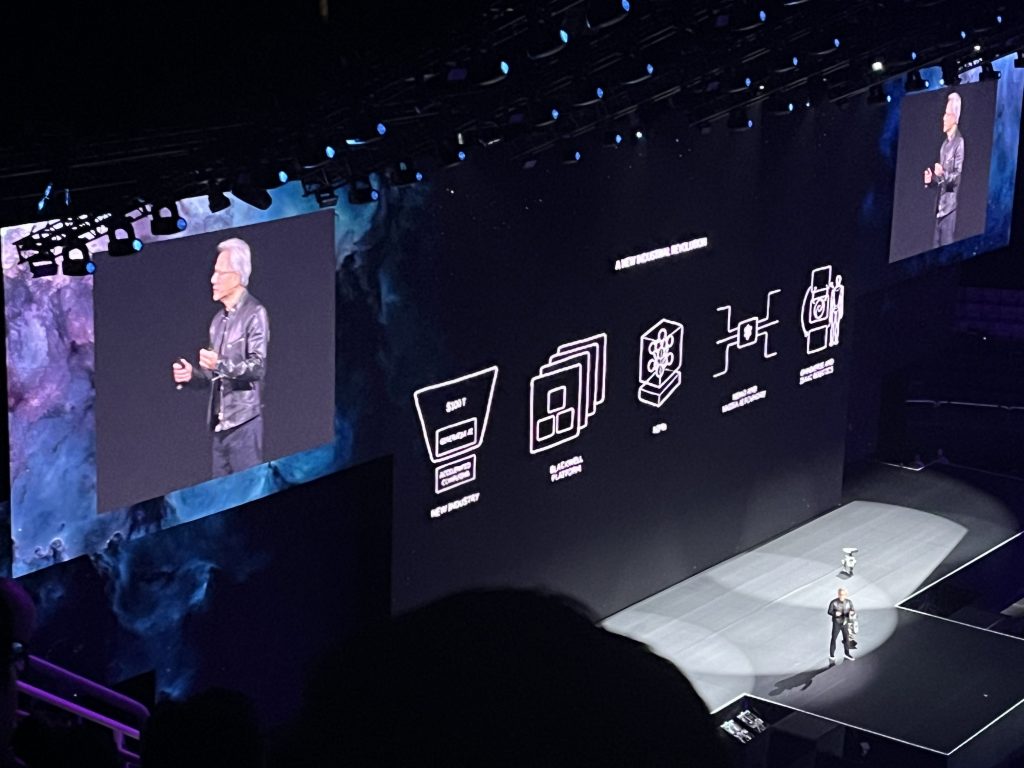
Much of the press has already dubbed the event “AI Woodstock.” While I wasn’t around for Woodstock, it’s cultural fingerprints are all over our society today and show up in the forms of the Coachellas, Bonnaroos and Lollapaloozas of the world. Similarly, in the same way Apple’s original iPhone event changed our world forever, it shouldn’t be a stretch to say this must have felt eerily similar.
#GTC2024 felt like a watershed moment for technology and a glimpse at what the not-too-distant future could hold. Whether or not we are in the early stages of the fourth industrial revolution, attending NVIDIA’s GTC conference was more than just a professional development opportunity. It was a chance to be part of a cultural moment that helped define the future of technology and AI.
The robot revolution is upon us, and this one WILL be televised.
